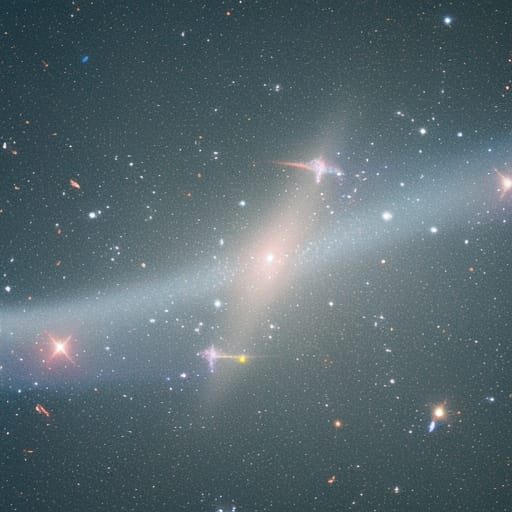I have begun to read Quintessence. It starts out rather dull. I am hoping that it picks up soon. Unlike End of Time, the author’s style is not provocative; he seems very methodical — though I’m only at the beginning, which contains all the introductory context.
Dark matter and dark energy have become a favorite topic for my curiosity. What better subject can there be to help stimulate the imagination? Observations suggest that there is something incredibly important throughout the universe that dominates its behavior, and no one knows what it is. These things cannot be sensed directly. They are completely different than anything we know today.
Free your mind.
Many people are unable to free their minds of what they know to be true, so that they can evaluate ideas from a different perspective. It is debilitating to be a rigid thinker. They are weak at evaluating alternative mental models, because they cannot apply their limited imagination in constructing such models.
What kind of image does the expanding universe invoke? Does your mind picture the universe itself as a ball growing larger, its boundaries stretching outwards? Or does it picture, as an observer within the universe itself, all of the galaxies moving away from eachother? Or does it picture a static universe without any notion of time or motion, and the expansion is merely a path in configuration space? Does it recognize the false notion of being an outside observer, while allowing this fiction to be imagined?
How do you picture the void of empty space? Is it a three (or higher) dimensional grid? Is it curved by the massive objects? Is it absolutely nothing at all, except for the void between things that actually exist? Or is it ethereal, filled with virtual particles that flash in and out of existence beyond our ability to perceive?
At many points in history, fundamental questions as simple as “what is space?” and “what is time?” have been asked and answered. Still we do not know the true answers; we only have intuitive notions based on teachings that have been socialized. We go through school learning mostly by rote the laws of the universe, such as those related to motion, momentum, and energy — notions that depend on understanding space and time. We are taught to treat space and time as intuitively obvious, because they are understood ostensibly. Yet, there may not be a single human being that has ever truly understood the nature of space and time — if those ideas have any correspondence to reality at all, and the jury is definitely out on that one. Despite this dilemma, the vast majority of students finish school with confidence that they know a great deal about space, time, motion, and many other important things. They don’t have an appreciation for the context of their knowledge — the limited scope of understanding that is encapsulated. They are taught the current state of understanding, which is good enough for most practical purposes in ordinary life. They are lies, or reasonable facsimiles of the truth, good enough to get you through most days without going too awry.
Just as the earth is not flat (though from a person’s viewpoint, it may appear that way), and the sun does not orbit the earth (though from a person’s viewpoint, it may appear that way), these ideas were once at the pinnacle of human knowledge, only to be invalidated later. We accept theories like general relativity and quantum mechanics because there isn’t yet any better explanation. They can be applied to good effect as a practical matter for a limited set of problems. But let us not forget that the accuracy of current theories has much room for improvement.
